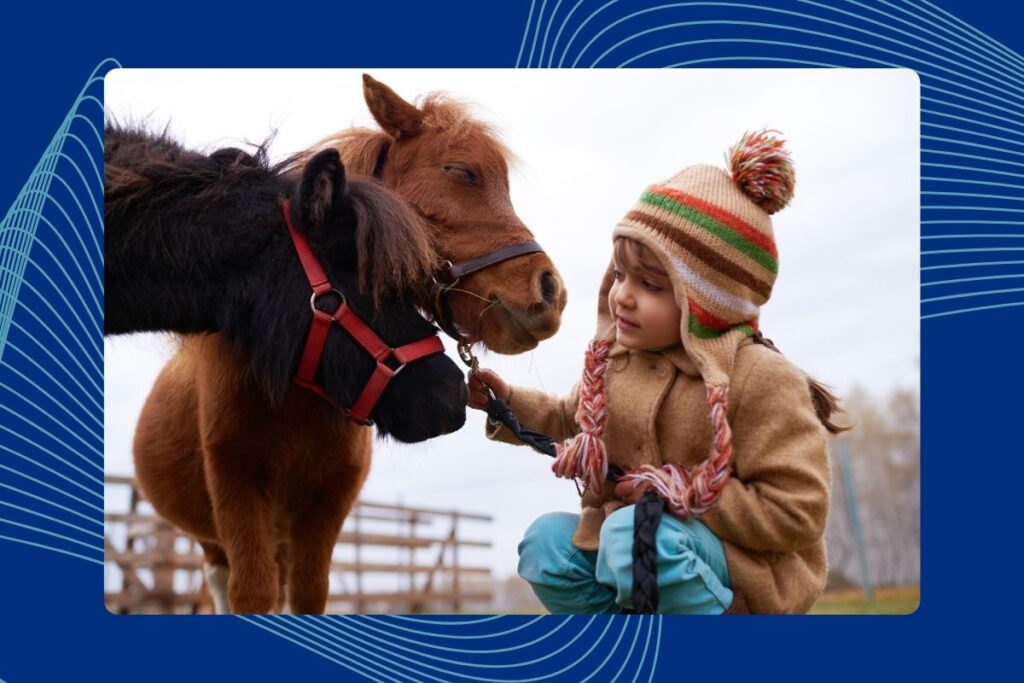The world of therapy is continually evolving, seeking innovative ways to enhance individuals’ well-being. One exciting development is the integration of animal therapy with Applied Behavior Analysis (ABA). Imagine a child with autism making eye contact for the first time because of the calming presence of a therapy dog. This blog aims to explore the connection between ABA and animal therapy, illustrating how these combined approaches can offer remarkable benefits.
Understanding ABA Therapy
ABA therapy, or Applied Behavior Analysis, is a scientific approach that uses principles of learning and behavior to bring about meaningful and positive changes in behavior. It is widely used to treat individuals, particularly children, with autism spectrum disorders. ABA focuses on improving specific behaviors, such as social skills, communication, reading, and academics, as well as adaptive learning skills, such as fine motor dexterity, hygiene, punctuality, and domestic capabilities.
Introduction to Animal Therapy
Animal therapy involves the use of animals as a form of treatment to improve a person’s social, emotional, or cognitive functioning. Types of animal therapy include:
- Therapy Dogs: Dogs trained to provide comfort and support.
- Equine Therapy: Use of horses to promote physical and emotional growth.
- Other Animals: Including cats, rabbits, and even dolphins in therapeutic settings.
Research supports the benefits of animal therapy, showing improvements in mental health, physical health, and overall well-being.
Benefits of Combining ABA and Animal Therapy
- Increased Engagement and Motivation: Animals can provide a motivating factor for clients, making them more likely to participate in and enjoy therapy sessions.
- Emotional Support: The presence of animals can offer emotional comfort, reduce anxiety, and improve overall mood.
- Skill Development: Interacting with animals can help improve social skills, communication abilities, and motor skills. For example, grooming a horse can improve fine motor skills, while giving commands to a dog can enhance communication abilities.
Challenges and Considerations
- Training and Certification: Both therapists and animals need proper training and certification to ensure safety and effectiveness. This includes specific animal-assisted therapy training programs for therapists and certification for therapy animals.
- Client Safety: Ensuring the safety of clients is paramount. This involves assessing the temperament of the animal, supervising interactions, and being aware of allergies or phobias.
- Regulatory and Ethical Issues: Therapists must adhere to ethical guidelines and legal regulations regarding the use of animals in therapy. This includes obtaining necessary permissions and ensuring the welfare of the animals involved.
Practical Steps for Integration
- Assessment: Begin by assessing whether a client is suitable for animal-assisted ABA therapy. Consider factors such as allergies, fear of animals, and the client’s specific needs and goals.
- Program Design: Design a therapy program that integrates ABA principles with animal therapy. This could involve setting specific goals, planning activities that involve the animal, and determining how progress will be measured.
- Implementation: Implement the program in a structured manner. This includes introducing the animal to the client, conducting sessions with the animal present, and regularly reviewing and adjusting the program based on the client’s progress.
Key Takeaways
Integrating ABA and animal therapy offers a unique and effective approach to improving clients’ well-being. This combined approach can lead to remarkable outcomes by enhancing engagement, providing emotional support, and fostering skill development. As therapists and practice owners, exploring this integration can open up new possibilities for your practice and offer enhanced therapeutic experiences for your clients.
FAQs
1. What types of animals are commonly used in animal therapy?
Commonly used animals in therapy include dogs, horses, cats, rabbits, and even dolphins. Each type of animal serves different therapeutic purposes; for example, therapy dogs can provide comfort and companionship, while horses in equine therapy can help with physical and emotional growth. The choice of animal often depends on the client’s specific needs and preferences.
2. How can animal therapy benefit mental health?
Animal therapy can significantly improve mental health by reducing anxiety, depression, and stress. The presence of animals can provide comfort, enhance mood, and promote relaxation through physical touch and companionship. Additionally, interacting with animals can increase levels of oxytocin, a hormone associated with bonding and positive emotional states.
3. Is there any scientific evidence supporting the effectiveness of animal therapy?
Yes, there is substantial scientific evidence supporting the effectiveness of animal therapy. Studies have shown that animal-assisted interventions can improve mental, physical, and overall well-being. Research highlights benefits such as lower blood pressure, reduced anxiety, improved social interactions, and increased motivation for therapy participation.




